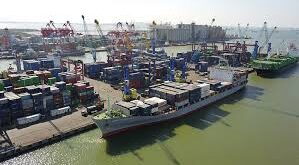Sydney, the bustling capital of New South Wales, is a central hub for container transport in Australia. As one of the country’s most significant ports, Sydney plays a crucial role in facilitating both national and international trade. This article delves into the various aspects of container transport Sydney, including its importance, infrastructure, challenges, and future prospects.
The Importance of Container Transport in Sydney
Container transport is vital to Sydney’s economy and the broader Australian economy. The efficient movement of containers ensures that goods can be imported and exported seamlessly, supporting businesses and consumers alike.
1. Economic Significance
Sydney’s container transport is a cornerstone of its economic framework. The Port of Sydney handles a significant volume of Australia’s containerized trade, contributing to the economic growth of the region. The seamless transport of goods helps maintain the supply chain, ensuring that products from various industries, including manufacturing, retail, and agriculture, reach their destinations efficiently.
2. International Trade
As a key gateway for international trade, the Port of Sydney connects Australia to global markets. The port’s strategic location allows for the efficient import and export of goods, playing a pivotal role in Australia’s trade with countries in Asia, Europe, and the Americas. The robust container transport system enables Sydney to handle a diverse range of products, from consumer electronics to raw materials.
3. Support for Local Industries
Local industries heavily rely on container transport to receive raw materials and distribute finished products. The construction, retail, and agricultural sectors benefit significantly from the efficient movement of containers. This support helps sustain local economies and employment, further emphasizing the importance of container transport in Sydney.
Infrastructure Supporting Container Transport
Sydney’s container transport infrastructure is well-developed, with a combination of road, rail, and maritime facilities ensuring the smooth flow of goods.
1. Port of Sydney
The Port of Sydney is a vital asset for container transport. Equipped with modern facilities, the port can handle large volumes of containerized cargo efficiently.
– Port Botany
Port Botany is the primary container port in Sydney and one of the busiest in Australia. It features state-of-the-art equipment and facilities, including automated stacking cranes and extensive berths that can accommodate large container ships. The port’s proximity to major road and rail networks makes it an ideal hub for container transport.
2. Road Transport
Road transport is essential for moving containers from the port to various locations within Sydney and beyond.
– Trucking
Trucking services play a critical role in container transport. Specialized trucks designed to carry containers ensure that goods are transported efficiently to their final destinations. Sydney’s extensive network of highways and roads facilitates the smooth movement of these trucks.
3. Rail Transport
Rail transport complements road transport by offering an efficient means of moving containers over longer distances.
– Intermodal Terminals
Sydney is home to several intermodal terminals that link rail and road transport. These terminals enable containers to be transferred between trains and trucks, optimizing the efficiency of transport. The Enfield Intermodal Logistics Centre and the Moorebank Intermodal Terminal are key facilities supporting container transport in Sydney.
4. Air Transport
While not as significant as sea and land transport, air transport also plays a role in containerized cargo, particularly for high-value or time-sensitive goods.
– Sydney Airport
Sydney Airport handles a portion of containerized cargo, providing an additional layer of connectivity for goods that require quick delivery. The airport’s proximity to the port and intermodal facilities enhances its role in the overall transport infrastructure.
Challenges in Container Transport
Despite its importance and well-developed infrastructure, container transport in Sydney faces several challenges.
1. Congestion
Congestion is a significant issue, particularly around Port Botany and key road networks. High volumes of traffic can lead to delays in the movement of containers, impacting the efficiency of the supply chain. Efforts to alleviate congestion through infrastructure improvements and better traffic management are ongoing.
2. Environmental Concerns
The environmental impact of container transport is a growing concern. The industry must address issues such as emissions from trucks and ships, noise pollution, and the ecological impact of port activities. Implementing greener technologies and practices is essential to mitigate these effects.
3. Regulatory and Compliance Issues
Navigating the complex regulatory environment can be challenging for container transport companies. Compliance with various national and state regulations, including safety standards and environmental requirements, is necessary but can be burdensome. Streamlining regulations and ensuring consistency can help improve efficiency.
4. Technological Integration
The integration of new technologies into existing infrastructure is crucial for maintaining efficiency. However, adopting these technologies can be challenging due to the costs and the need for skilled personnel. Ensuring smooth integration while maintaining operational efficiency is a delicate balance.
Future Prospects for Container Transport in Sydney
The future of container transport in Sydney looks promising, with several trends and innovations set to shape the industry.
1. Technological Advancements
The adoption of advanced technologies, such as automation, artificial intelligence, and blockchain, is expected to revolutionize container transport. Automated port facilities and AI-driven logistics management can enhance efficiency and reduce costs. Blockchain technology can improve transparency and traceability, ensuring secure and efficient handling of containers.
2. Sustainability Initiatives
Sustainability is becoming a priority for the container transport industry. Initiatives to reduce emissions, such as the use of electric trucks and cleaner fuels for ships, are gaining traction. Investing in sustainable practices not only helps the environment but also improves the industry’s long-term viability.
3. Infrastructure Investments
Continued investment in infrastructure is essential to meet the growing demands of container transport. Expanding port facilities, upgrading road and rail networks, and developing new intermodal terminals will enhance capacity and efficiency. Public-private partnerships can play a vital role in financing these projects.
4. E-commerce Growth
The rise of e-commerce is driving changes in container transport dynamics. The increasing demand for fast and efficient delivery services is pushing companies to innovate their logistics strategies. Enhancing last-mile delivery solutions and optimizing supply chains to meet e-commerce demands will be crucial.
5. Resilience and Adaptability
The COVID-19 pandemic highlighted the need for resilience in supply chains. Building adaptable and resilient transport systems that can withstand disruptions is vital. Diversifying sourcing strategies and developing contingency plans will help ensure the smooth flow of goods in times of crisis.
Conclusion
Container transport Sydney is a critical component of the city’s economy and Australia’s overall trade network. With its well-developed infrastructure, strategic location, and significant economic impact, Sydney’s container transport system supports a wide range of industries and connects Australia to global markets.
While challenges such as congestion, environmental concerns, and regulatory complexities exist, the future of container transport in Sydney looks bright. Embracing technological advancements, sustainability initiatives, and infrastructure investments will ensure the industry’s continued growth and efficiency.
As Sydney navigates the evolving landscape of container transport, its ability to adapt and innovate will be key to maintaining its position as a vital hub for trade and commerce. With a focus on resilience and sustainability, Sydney is well-equipped to meet the demands of the future and continue to play a pivotal role in the global supply chain.
 The Random Collective Where Curiosity Meets Creativity
The Random Collective Where Curiosity Meets Creativity






